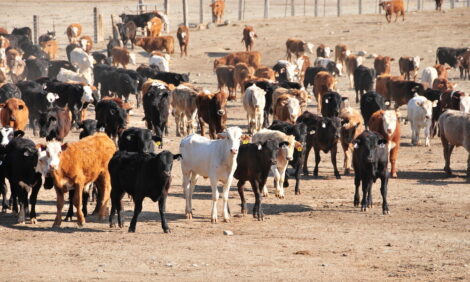



US soybean export sales drop to historic low - CoBank
A rebound could be coming, CoBank economist saysGlobal demand for US soybeans has fallen sharply as international buyers remain discouraged by a strong dollar, slowing economic growth and uncertainty over the direction of US trade policy in an election year, according to a recent market report from CoBank.
Export sales of new-crop soybeans are historically low as the US enters the 2024/25 soybean marketing year on Sept. 1. However, several tailwinds could emerge to rejuvenate demand for US soybeans in the marketing year ahead.
According to a new research brief from CoBank’s Knowledge Exchange, the pace of early season soybean export sales historically has a low correlation with final export numbers for the marketing year. With a record US soybean harvest expected this fall, continued weakness in prices will likely attract new export demand.
“The US soybean export program faces a number of obstacles in the weeks and months ahead, particularly with flagging demand from China,” said Tanner Ehmke, lead grain and oilseed economist for CoBank. “But a slow start to the export sales pace does not necessarily mean it will be bad year for US soybean exports. We see the potential for several developments that could bolster exports later in the year.”
The peak shipping period for US soybeans runs from September to December, with typically more than half of all shipments for the season occurring in those four months before the arrival of the South American harvest.
China typically accounts for the majority of US soybean export sales. Following record imports from Brazil, Chinese bookings of new-crop US soybeans are among the lowest levels in two decades. China is not alone in their current reluctance to buy US soybeans. Total US new-crop export sales are the lowest since 2008, aside from the trade war low in 2019.
Ehmke pointed to four key factors that could reverse the lackluster pace of soybean exports. A smaller-than-expected South American soybean harvest, a bump in European demand for soybeans from non-deforested acreage, falling interest rates in the US, and a recovery of the Chinese economy could all fuel increased export demand for US soybeans in the year ahead.
USDA is currently forecasting a record Brazilian soybean crop of 169 MMT. However, low prices may discourage Brazilian farmers from expanding soybean acreage as planting begins in the coming weeks. La Niña to also expected to emerge this September, which could negatively impact Brazilian soybean yields.
New European demand for US soybeans is also expected to emerge when rules surrounding imports and deforestation take effect. Beginning Dec. 30, 2024, new imports into the EU must be certified to have come from land that was not deforested in the past decade. That gives soybeans of US origin an advantage over South American soybeans in the European market.
An economic recovery in China could lead to an acceleration of soybean purchases. The Chinese government is expected to aggressively lower interest rates in an attempt to stimulate the country’s sagging economy. An economic boost that raises consumer demand for meat in China could lift demand for soybeans and soybean meal.
Finally, interest rate cuts from the Federal Reserve may also drive money back into emerging markets like Brazil, strengthening Brazil’s currency against the US dollar. A stronger Brazilian real versus the US dollar will give US soybeans an advantage in the export market.



